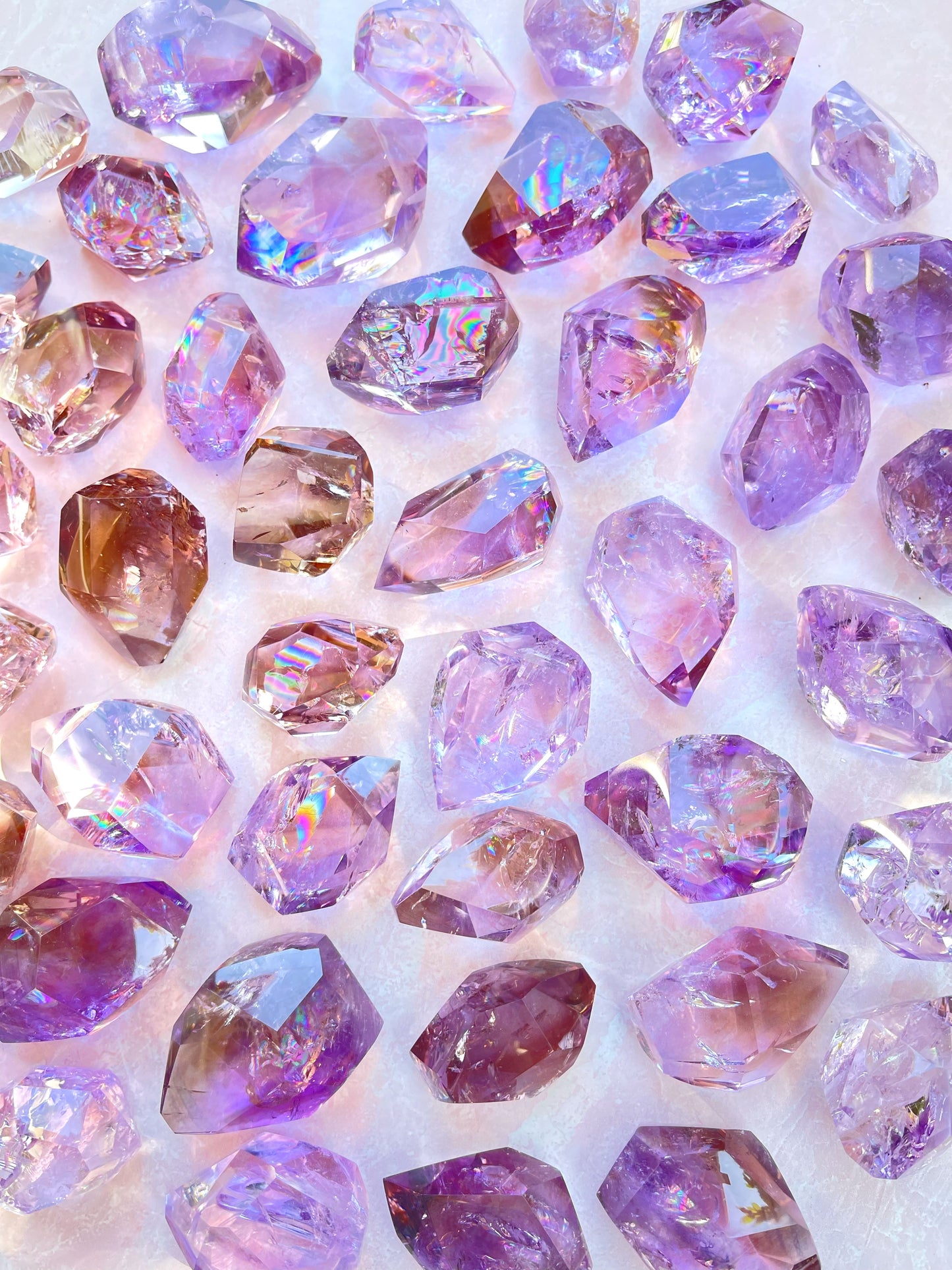
Amethyst is a captivating and well-loved gemstone that belongs to the quartz family. Renowned for its stunning purple hues, amethyst has been cherished for centuries, both for its beauty and its supposed mystical properties.
Chemical Composition
The chemical formula of amethyst is SiO₂, which means it is composed of silicon dioxide. Like all quartz crystals, amethyst has a hexagonal crystal system and a hardness of 7 on the Mohs scale, making it a durable and resilient gemstone suitable for various types of jewelry.
What Gives Amethyst Its Color?
The enchanting purple color of amethyst is primarily due to the presence of iron impurities within the crystal structure. When these iron ions are exposed to natural radiation over time, they alter the crystal lattice, resulting in the vibrant purple shades that range from light lavender to deep violet. The specific coloration can also be influenced by trace amounts of other elements and the specific conditions under which the crystal formed.
A Glimpse into History
Amethyst has a rich history that spans multiple cultures and civilizations. In ancient Greece, amethyst was believed to prevent intoxication, and its name derives from the Greek word "amethystos," meaning "not drunken." Greek mythology tells of the goddess Diana who transformed a maiden named Amethystos into a quartz statue to protect her from the wrath of Bacchus, the god of wine. In Roman times, amethyst was often carved into intaglios and used in rings.
Throughout history, amethyst has been highly valued. During the Middle Ages, it was considered a symbol of royalty and used in the crowns and regalia of European monarchs. The gemstone also appears in various religious contexts, such as in the breastplate of the High Priest in the Bible, where it was one of the twelve stones representing the twelve tribes of Israel.
Metaphysical Properties
(Disclaimer: These properties are based on cultural beliefs and are not scientifically proven)
Many people today cherish amethyst for its purported metaphysical properties. It is often associated with calmness, balance, and peace. Some believe that amethyst can enhance spiritual awareness, aid in meditation, and provide protection against negative energies. It is also thought to help with insomnia and to bring clarity of mind.
However, it is important to note that these metaphysical properties are based on cultural traditions and personal beliefs rather than scientific evidence. **Please do not take this as medical advice. Always consult with a qualified healthcare professional for any medical or health-related issues.**
Amethyst continues to captivate people around the world with its beautiful color and intriguing history. Whether you are drawn to it for its aesthetic appeal or its historical significance, amethyst remains a timeless gem that bridges the gap between the natural and the mystical.